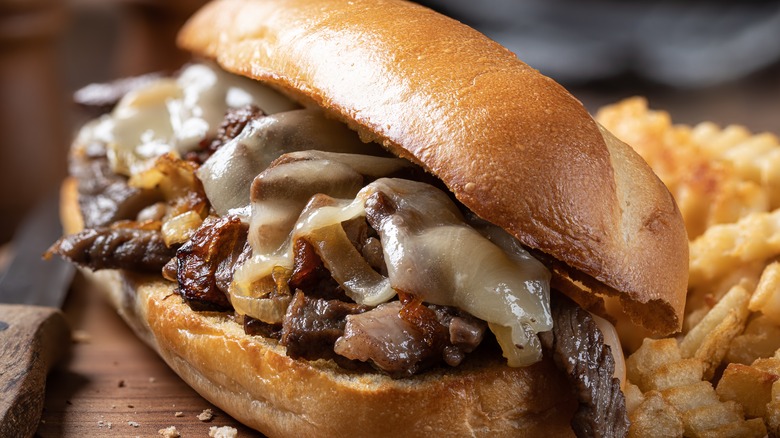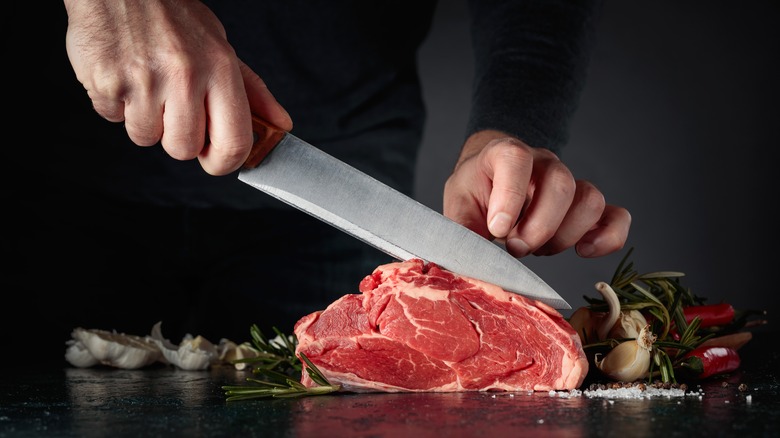How To Thinly Shave Ribeye For A Deliciously Authentic Cheesesteak
A hot, fresh cheesesteak has many great qualities: The soft hoagie rolls, the gooey Provolone cheese (or cheese wiz), and the sweet peppers and onions. But the main event, of course, is the ribeye, which is the cut of beef traditionally used for cheesesteak. Not just any old hunk of steak will do here — in order to achieve that melt-in-your-mouth effect that comes from the meat cooking in its own fat, the ribeye needs to be sliced into thin, bite-sized pieces.
You'll want to get your steak down to ⅛ inch-thick slices, or just as thin as you can realistically cut them. While most cheesesteak shops have deli slicers that can easily achieve that for them, we typically don't have these devices in our own kitchens. So we're left with two options: Cutting the meat with a knife or with a food processor. Each one has its pros and cons. The former can be a little trickier to accomplish if you're not used to slicing meat so thin, but if done well, you'll get pretty, uniform ribbons of ribeye. The latter involves an easier technique, but you'll need an appliance and an attachment to get the job done.
Freezing the steak before slicing is key
Whichever method you choose for slicing your ribeye, pop your meat in the freezer for about 20 minutes beforehand. First pat it dry and place it on a baking sheet, then let it firm up uncovered, which will make it much easier to achieve the thin slices you want. Then before you start cutting, make sure the (not serrated) knife you're using is super sharp to easily slide through your meat and to keep your hands safe. When you begin sawing into the ribeye, slice against the grain for the most tender pieces possible.
If you're going with the food processor, however, you'll want to have the slicing blades attached before you place your meat in, and ideally, ones that are 2 millimeters thick. First chop your meat into chunks that will fit in your device, as it may be more difficult to get the entire ribeye there in one piece. Then simply feed your steak through the tube and let the blades go to work, although you may have to finish the last bit off by hand if your device can't hack it. After your steak is chopped up into thin slices, you can season your meat with salt and pepper and get to cooking.

